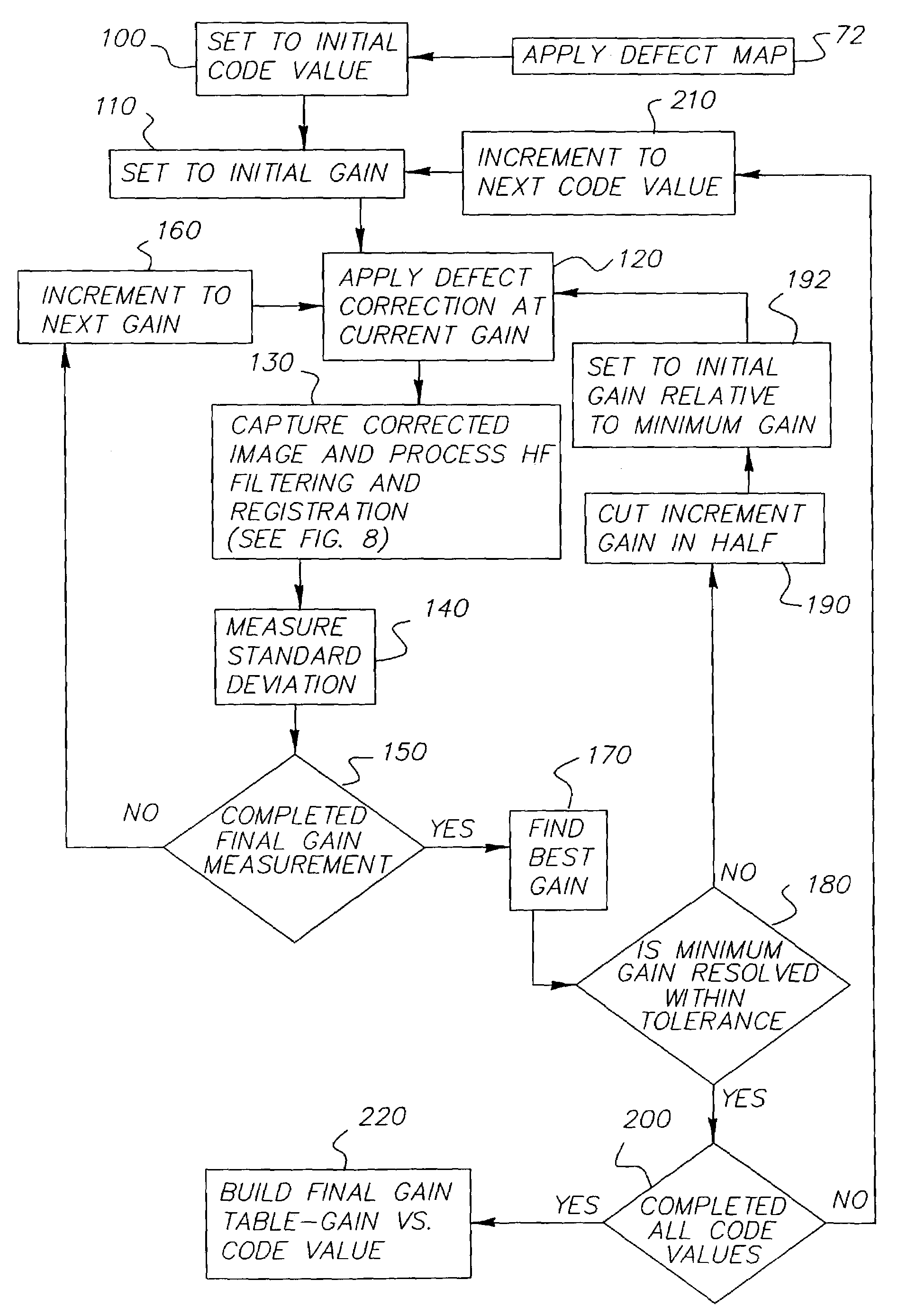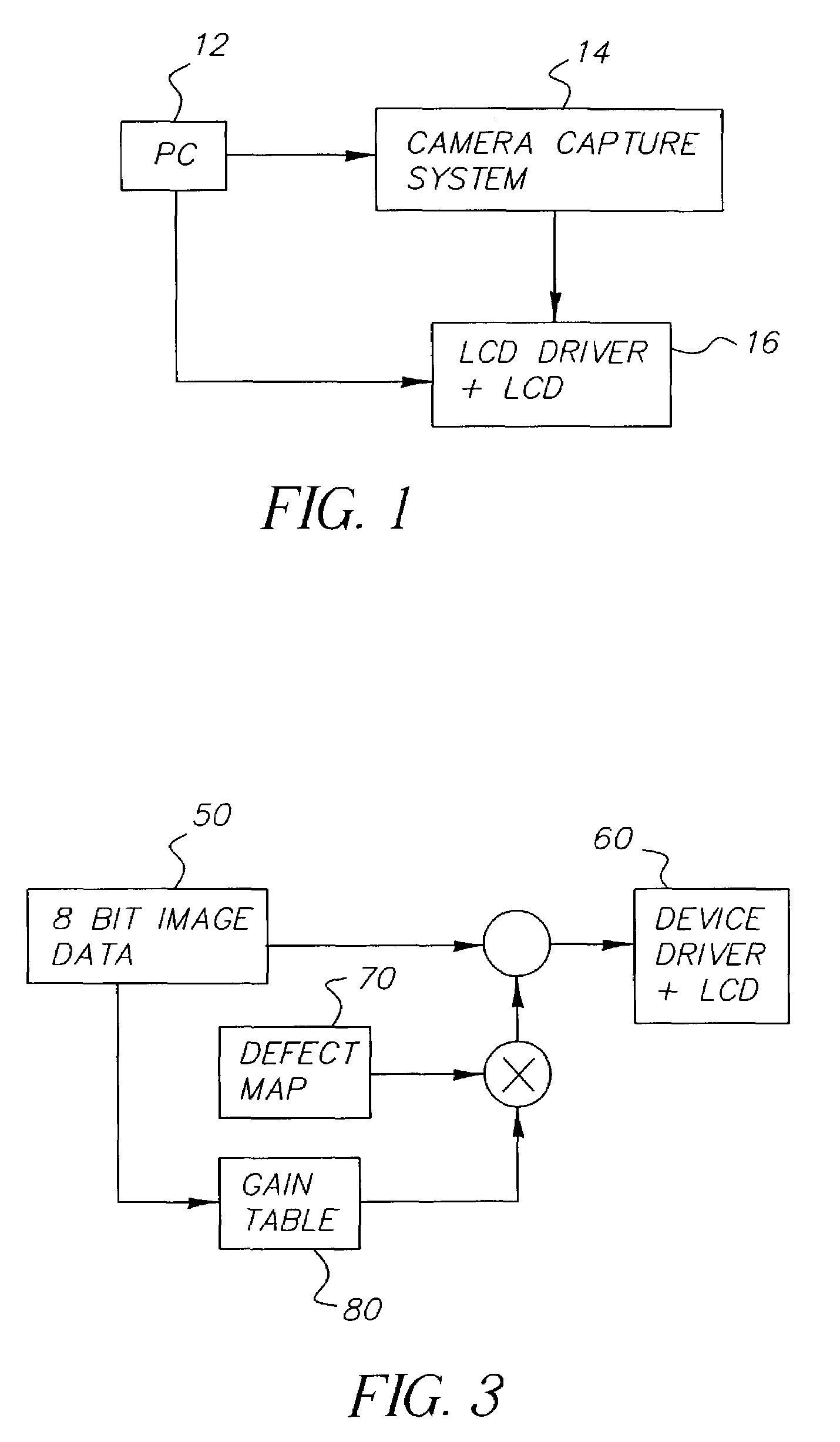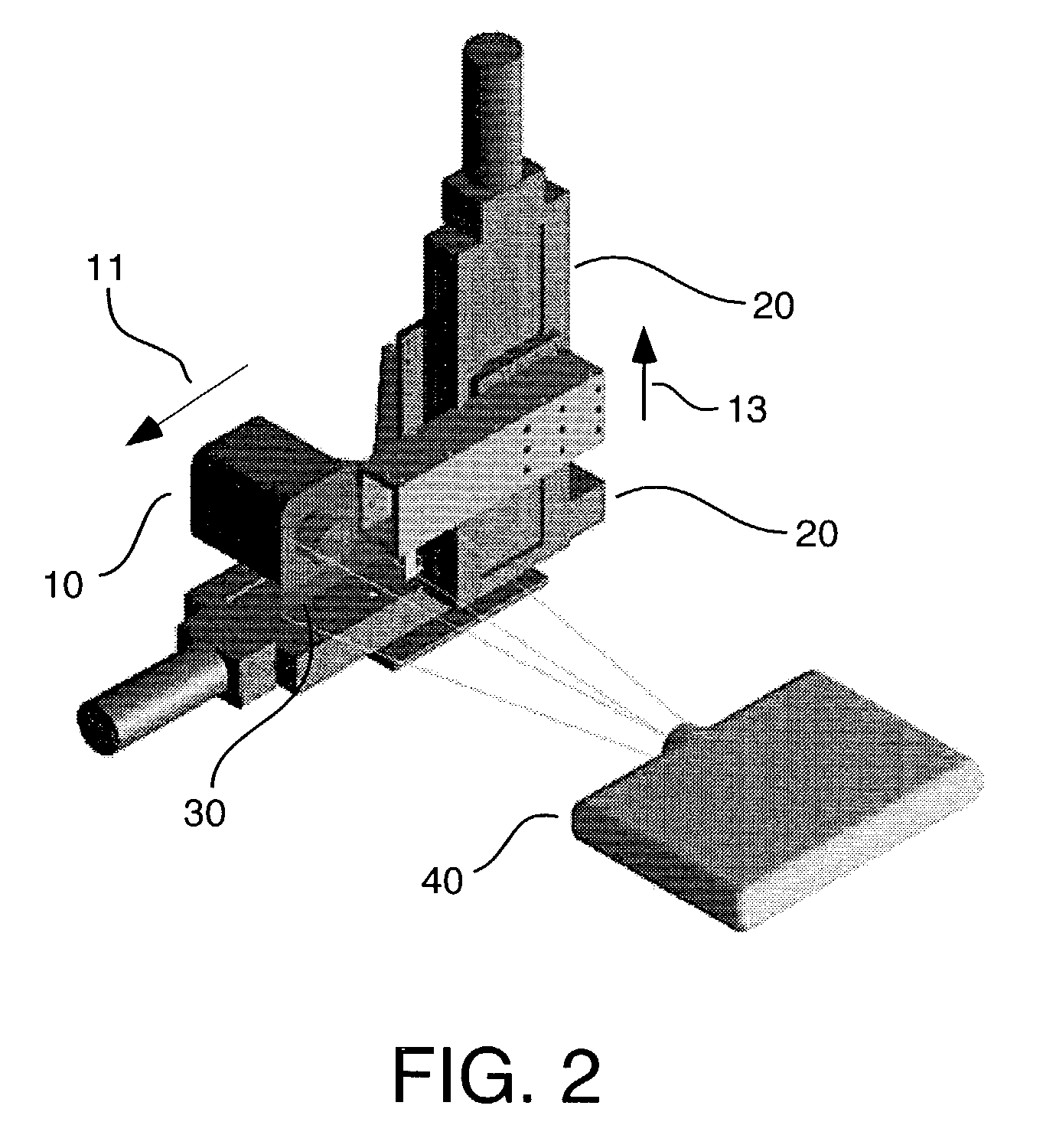Method for determining an optimum gain response in a spatial frequency response correction for a projection system
a spatial frequency response and gain response technology, applied in the field of digital projection device defect correction, can solve the problems of low spatial frequency defect in the resulting image, produced defects in the final image, high spatial frequency defects, etc., and achieve the effect of improving the defect correction and simplifying the defect correction
- Summary
- Abstract
- Description
- Claims
- Application Information
AI Technical Summary
Benefits of technology
Problems solved by technology
Method used
Image
Examples
Embodiment Construction
[0025]The present invention will be directed in particular to elements forming part of, or in cooperation more directly with the apparatus in accordance with the present invention. It is to be understood that elements not specifically shown or described may take various forms well known to those skilled in the art.
[0026]Referring now to FIG. 1 a personal computer (PC) 12 controls the camera capture system 14, and retrieves images from the camera capture system 14, along with controlling the liquid crystal device (LCD) through it's driver 16. The camera capture system block and LCD driver plus LCD are also shown in FIG. 1. The PC is also used for image processing and determination of the gain table response of the present invention.
[0027]Referring next to FIG. 2 an assembly drawing shows the camera capture system 14 assembly including a camera 10, translation stages 20, for moving the camera in an x, y plane with respect to the image plane 30 created by LCD driver and projection syst...
PUM
 Login to View More
Login to View More Abstract
Description
Claims
Application Information
 Login to View More
Login to View More - R&D
- Intellectual Property
- Life Sciences
- Materials
- Tech Scout
- Unparalleled Data Quality
- Higher Quality Content
- 60% Fewer Hallucinations
Browse by: Latest US Patents, China's latest patents, Technical Efficacy Thesaurus, Application Domain, Technology Topic, Popular Technical Reports.
© 2025 PatSnap. All rights reserved.Legal|Privacy policy|Modern Slavery Act Transparency Statement|Sitemap|About US| Contact US: help@patsnap.com



